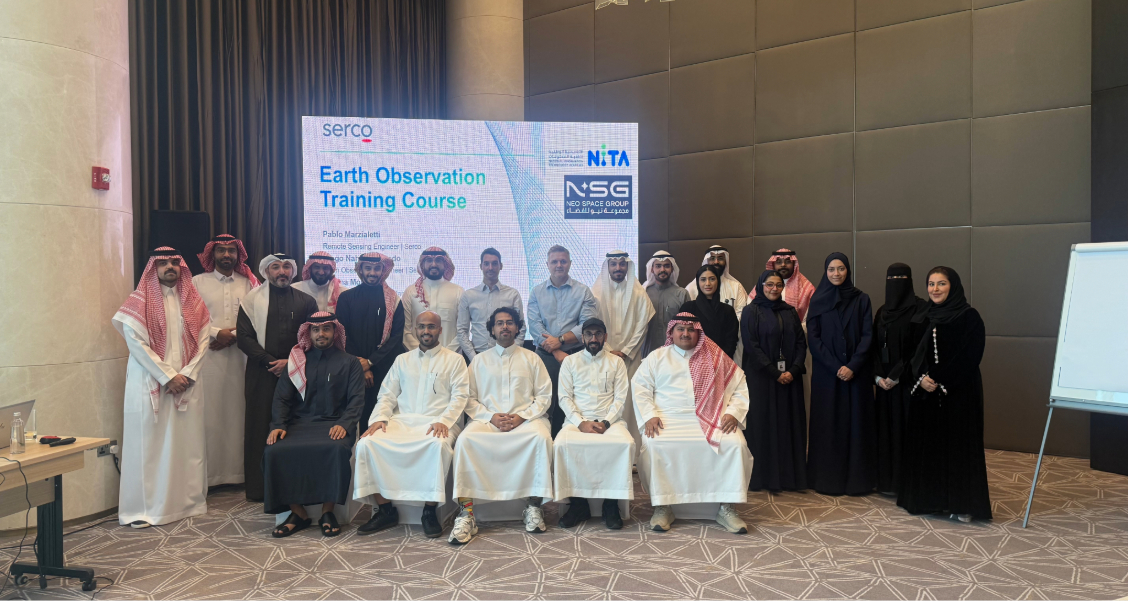UK Space Agency funds new space tech projects

Image copyright Shutterstock
The Enabling Technologies Programme (ETP) provides opportunities for the UK space sector to accelerate the development of advanced technologies that could be used to tackle global problems and benefit the work of space organisations internationally.
The total government funding is £4 million - made up of £3.2 million from the UK Space Agency with £800,000 contributed by the Science and Technology Facilities Council (STFC), part of UK Research and Innovation (UKRI).
The projects from academia and industry explore how space can be used more efficiently for purposes such as weather prediction, climate-change monitoring, and space debris removal through methods of propulsion, sterilisation, in-orbit servicing, imaging, and more.
Dr Paul Bate, CEO of the UK Space Agency, said: "Space science and technology has never been more important to life on Earth. The Enabling Technologies Programme demonstrates how our work at the UK Space Agency is empowering scientists and engineers in universities, companies and research institutes to develop new capabilities and advance the technologies of tomorrow. From the use of space data for weather predication and flood monitoring, to new methods of propulsion and in-orbit servicing, these new projects are great examples of how we can harness the power of space to protect our planet and people."
One project from the University of Glasgow explores how a spacecraft can consume its own body as fuel – to support scalable, cost-effective low Earth orbit access.
Meanwhile, the University of Bristol looks at use of data from the UK-backed Surface Water and Ocean Topography (SWOT) mission, targeting an order or magnitude improvement in accuracy for global flood modelling.
Another, run by Oxford Dynamics looks at how a long-range radar system could detect objects in low Earth orbit to support space debris mitigation operations.
Professor Grahame Blair, STFC Executive Director, Programmes, said: "We are living through an incredibly exciting time for the UK space industry. Thanks to initiatives such as the Enabling Technologies Programme, our space scientists are continually pushing the frontiers of Earth observation, satellite communications and even manned space exploration, with untold benefits to society. STFC is proud to partner with the UK Space Agency to support the UK space science community and help solidify the UK’s position as a world leader in the space economy."
Support from the ETP fund is key to addressing project barriers in research and development, bringing high value space technologies to market that can create jobs and benefit people, businesses and communities for generations to come.
Projects:
University of Southampton (£201,000) – Development of a sterilisation method using non-thermal plasma to support human spaceflight and exploration.
University of Southampton (£102,000) – Development of Raman-spectroscopy (which uses scattered light to measure vibrational energy of samples) for detecting low level biosignatures (substance that provide evidence of life), which will particularly support exploration of icy worlds, including the Moon and Mars.
Fraunhofer Centre for Applied Photonics, UK (£240,000) – Development of a low SWaP light detection and ranging method (LiDAR) instrument that can be mounted onto unmanned aerial vehicles (UAVs) to support Earth observation.
Fraunhofer Centre for Applied Photonics, UK (£247,000) – Development of low cost, room temperature photon counting detectors that can be used in imaging, sensing and optical communications.
University of Manchester (£190,000) – Development of alternative motion techniques that expand the range and operating capabilities for extra-terrestrial robotics, supporting future rover and exploration missions.
Imperial College London (£144,000) – Development of a new approach for magnetometer systems that reduces the need for booms on a spacecraft, helping to lower the cost of space science missions.
MDA Space and Robotics (£147,000)– Development of a novel laser sensor to make complex, vision-based missions possible in poor illumination conditions.
RAL Space (£233,000) – Development of a highly stabilised laser which can be used in low Earth orbit to support space weather measurement.
MDA Space and Robotics UK (£141,000) – Development of short-range, rotating LiDAR, more efficient in terms of size, weight and power, that can be used in planetary surface robotics.
Surrey Space Centre, University of Surrey (£250,000) – Development of a detector for high energy particles that can be used in solar or cosmic ray missions and to enhance space weather predictions.
University of Birmingham (£250,000) – Development of a new operational and technical capability to assess the state and condition of satellites from orbit using sub-THz radar imagery, supporting in-orbit service capabilities.
University of Leicester (£183,000) – Development of sample return instrument boxes and portable sample containers to support rover and sample return missions.
Durham University (£159,000) – Development of a solar polarimeter (optical instrument used to determine polarisation of light samples) that can be wavelength-tuned to measure the solar magnetic field over several hundred kilometres depth within the second layer of the Sun’s atmosphere.
University of Hertfordshire (£100,000) – Project to substantially increase the dynamic range of complementary metal oxide semiconductor (CMOS) imaging sensors to support astronomy, in collaboration with XCAM and the Open University.
University of Glasgow (£250,000) – Additive manufacturing material and process testing in a simulated space environment, enabling rapid, sustainable and cost-effective component qualification.
University of Glasgow (£290,000) – Pilot scale testing of an autophage (self-consuming) propulsion system – whereby the spacecraft consumes its own body as fuel – which supports scalable, cost-effective low Earth orbit access.
Teer Coatings Ltd (£124,000) – Development of a novel bimetallic doped, thin-film MoS2 solid lubricant with long lifetime, low friction coefficient and stability under atmospheric conditions. An enabling technology for long duration missions.
Oxford Dynamics (£194,000) – Development of a long-range radar system capable of detecting objects in low Earth orbit, which could support space debris mitigation operations.
Newton Launch Systems (£194,000) – Development of a nitrous oxide monopropellant thruster using induction heating as the trigger, with the aim of providing a solution to end-of-life satellite disposal.
University of Bristol (£206,000) – Use of data from NASA’s UK-backed Surface Water and Ocean Topography (SWOT) mission to improve order of magnitude accuracy for global flood modelling.
Orbit Fab (£228,000) – Development of an in-orbit refuelling interface, using a grasping technique, to enhance satellite servicing solutions that support sustainable space operations.
University of Strathclyde (£250,000) – Development of a technique combining hyperspectral technology (imagine using a wide electromagnetic spectrum) with machine learning to determine the movement of space objects, with could support active debris removal operations.
GMV (£250,000) – Development of a novel distributed simulation environment using a robotic testbed with digital twins and cutting-edge extended reality to verify and validate IOSM operations. An enabling technology for in orbit refuelling and satellite servicing.












